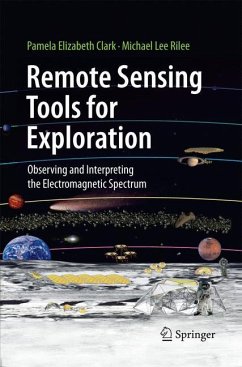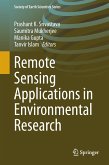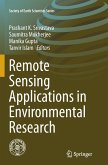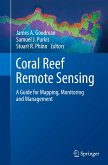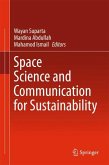Remote Sensing from a New Perspective The idea for this book began many years ago, when I was asked to teach a course on remote sensing. Not long before that time, I had been part of the effort to develop the first database for planetary data with a common digital array format and interactive processing capabilities to correlate those data easily: the lunar consortium. All the available lunar remote sensing data were included, orbital and ground-based, ranging across the entire electromagnetic spectrum. I had used this powerful tool extensively, and, in that spirit, I was determined to create a course which covered the entire spectrum and a variety of targets. As I looked around for the equivalent of a textbook, which I was willing to pull together from several sources, I realized that available material was very heavily focused on the visual and near visual spectrum and on the Earth as a target. Even The Surveillant Science, edited by Edward Holz and published in 1973, which broke newground in having diverse articles on most of the spectrum when it was created, focused entirely on the Earth. My personal favorite, the exceedingly well written book on remote sensing by Floyd Sabins first published in 1978, covered the visual, infrared, and microwave portions of the spectrum beautifully but focused on the Earth as well. Unhindered, I developed what I called 'packets' of material for each part of the spectrum.
From the reviews:
"Clark (NASA Goddard Space Flight Center) and Rilee (Rilee Systems Technologies) have written an engaging, comprehensive book on remote sensing, designed to be accessible to readers in a wide range of fields by minimizing the use of discipline-specific jargon. ... text discussing events in Clark's graduate and professional career that very effectively ground the technical material in human endeavor. The book includes a list of references at the end of each chapter and a very useful index. Summing Up: Highly recommended. Upper-division undergraduates through professionals." (W. Weston, Choice, Vol. 48 (7), March, 2011)
"Clark (NASA Goddard Space Flight Center) and Rilee (Rilee Systems Technologies) have written an engaging, comprehensive book on remote sensing, designed to be accessible to readers in a wide range of fields by minimizing the use of discipline-specific jargon. ... text discussing events in Clark's graduate and professional career that very effectively ground the technical material in human endeavor. The book includes a list of references at the end of each chapter and a very useful index. Summing Up: Highly recommended. Upper-division undergraduates through professionals." (W. Weston, Choice, Vol. 48 (7), March, 2011)

